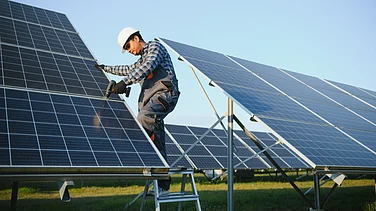There was a time when Delhi stood tall, as the vibrant heart of India—a city where history whispered through the walls of monuments, and culture throve on its bustling streets. Winters brought the crisp air of festivities, and the Yamuna mirrored the serenity of a city in motion. Sadly, for this history-soaked city, it is yesterday no more.
Clouded by smog, political mudslinging and an all-pervasive sense of resignation, the city now wears the look of desperation, a bleak shadow of its majestic past, its crumbling infrastructure and poisoned air and rivers symbolising the decay.
We live in a city that has, quite literally, stopped breathing. And, more tragically, stopped fighting.
A City Gasping for Air
Delhi’s air quality is among the worst in the world, with PM2.5 levels often exceeding 500 micrograms per cubic meter during winters—20 times higher than the WHO’s safe limit of 25. More than defining the toxicity of the air we breathe; these numbers point to a full-blown public health crisis. Every breath in the city extracts its cost: reduced lung function, heightened risk of respiratory diseases, and stunted development of children.
This winter, pollution has crossed all thresholds, activating Grade 4 measures—the strictest emergency response under Delhi's Graded Response Action Plan, paralysing normal life, with schools shutting down, outdoor activities suspended, and construction banned. How does one explain to a small child eager to play that he cannot step out because the air is much too toxic for him to breathe? I had no choice to do this to my three and a bit-year-old son. Children are more vulnerable to pollution, as their lungs are still developing and their breathing rates are higher, meaning they inhale more pollutants relative to their body weight. As he gazed at me, his baby eyes tinged with disappointment, I felt gutted.
Parents across the city anxiously track air quality indices as if they were stock prices. Air purifiers hum relentlessly at homes, masks are ubiquitous, and the city trudges on, waiting for the seasonal smog to lift—as if it were an unavoidable act of nature. The truth is stark: Delhi has normalised the abnormal. Breathing clean air—a fundamental right—has become a privilege reserved for vacations and gated homes.
Water: A Vanishing Lifeline
If the toxic air in the city does not get you, then the scarcity of water certainly will. According to a NITI Aayog report, Delhi could run out of groundwater by 2030, leaving millions dependent on external sources. For many neighbourhoods, that is already a grim reality. Wealthier colonies rely on private tankers or expensive filtration systems, while poorer neighbourhoods face daily struggles for access to even the most basic supply.
And then there’s the Yamuna. Once a symbol of life, the river is now one of the most polluted in the world, with 70% of its water unfit for consumption or even bathing. Every monsoon, the river floods, only for the water to recede and reveal toxic sludge, its banks littered with waste. How did a city that built awe-inspiring stepwells to conserve water sink to such squalid lows?
The Cycle of Blame
Delhi’s environmental crisis is a tangled web of causes and responsibilities. Farmers in neighbouring states burn crop stubble, contributing to the winter smog. Industrial emissions and vehicular pollution add layers of toxicity. The Yamuna’s contamination stems from untreated sewage, industrial discharge, and urban runoff. But instead of finding systemic solutions, we resort to an endless blame game.
The Centre points at the state. The state blames its neighbours. Citizens fault everyone. No one takes responsibility. And so, the carousel spins on. Meanwhile, the air thickens, the water vanishes, and we, the people, carry on, adapting to the unthinkable.
Resigned to Toxicity
This resignation is perhaps the most tragic aspect of Delhi’s story. Air purifiers hum in the background of middle-class homes. Bottled water fills our fridges. Vacation plans are meticulously scheduled to coincide with peak smog season. We have built personal fortresses against the decay outside, but at what cost?
In marginalised communities, the story is different. There are no air purifiers or private tankers. Here, children grow up stunted, families succumb to waterborne diseases, and life expectancy reduces year on year, simply because of where they were born. The environmental crisis is about nature, about justice, equity and, most existentially, about survival.
Dreams in a Dying City
For parents raising children in Delhi, the crisis has profound personal implications. My son, like countless others, is trapped indoors. He cannot go out to play or even to school, because stepping out brings with it a host of unacceptable medical risks, some of which could cause irreversible health issues.
The wealthy have an option: to leave. Many families are moving to cities with better air and water. But for those who stay, the choice becomes one of compromise. The irony is painful—Delhi, once the land of opportunity, is now a city where even the basics of life are in question.
Year-Round Solutions for a Healthier Delhi
The task of tackling Delhi’s environmental crisis must move from seasonal interventions to sustained year-round action that involves every citizen, making each of them responsible for his surroundings. Beyond awareness it is about fostering a culture of responsibility backed by strict measures to deter environmental abuse. Here is how we can drive this change:
Air Quality
A cleaner future hinges on stringent pollution controls across industries and vehicles. Accelerating the shift to electric vehicles and clean fuels with incentives will help ease the burden on our air. Meanwhile, supporting farmers with viable alternatives to stubble burning and rigorously tracking outcomes will address one of the most serious sources of pollution.
Water management
Delhi's water crisis requires large-scale solutions, starting with investments in rainwater harvesting and groundwater recharge. Upgrading sewage treatment plants is non-negotiable; untreated waste must never flow into the Yamuna. Equally important are community-driven initiatives that ingrain water conservation practices across all income groups, fostering a sense of shared responsibility.
Citizen participation
Since behavioural change cannot happen without incentives, we must rollout policies that reward car-pooling, use of public transport and waste segregation. This will promote the adoption of sustainable practices. On the flip side, penalising polluters and violators ensures accountability. But enforcement must be fair, consistent and relentless. Awareness campaigns rooted in cultural values will help build a long-lasting commitment to environmental stewardship.
Policy and Collaborations
Sustained change depends on robust policies and regional cooperation. Transparent monitoring mechanisms for air and water quality are vital, as is testing alternative policy scenarios to build institutional resilience. States must collaborate, share resources and commit to collective time-bound action. Long-term environmental strategies must take precedence over short-term political gains and urban leaders must communicate the true cost of inaction because the price of doing nothing is one we cannot afford.
Through collective effort, responsibility and enforcement, Delhi can shift from crisis management to sustainable living. The time for action is now.
Hope Amidst Despair
Gloomy as the prospect appears, Delhi is certainly not beyond salvation. Cities, like Beijing, Jakarta, Kampala and Accra have shown that sustained air quality measures—like strict vehicle emission controls, implementation of strict pollution norms on fossil fuel burning and investments to improve public behaviour towards sustainable transportation choices—can dramatically improve air quality. Delhi can tailor such solutions to its unique challenges.
For inspiration, look no further than Warrior Moms Delhi, a collective of passionate mothers advocating for clean air and a healthier environment for their children. They actively raise awareness, push for stricter pollution control measures, and empower communities to demand their right to breathable air.
The Final Question
Delhi has not lost because it lacked resources or ideas. It has lost because we, its citizens, stopped believing in the possibility of change. But hope is not entirely extinguished. The air may be thick, and the river polluted, but the spirit of Delhi—its resilience, its defiance—remains undimmed beneath the haze.
For the sake of my child and all the children growing up in this city, I refuse to surrender. However, individual action alone cannot carry the weight of this crisis. To spark true, long-term change, we need a collective uproar—a visible and palpable demand for clean air and water that transcends media headlines and resonates in the halls of power. Governments must feel the unrelenting pressure of a united citizenry refusing to normalise this decay.
The city that once inspired poets, revolutionaries, and dreamers can reclaim its lost glory. But the journey starts with us—acknowledging the problem, reclaiming responsibility, and channelling our love for Delhi into collective action that cannot be ignored.
Will you join me in breathing life back into Delhi?
(Satyam Vyas is a social entrepreneur and founder, ClimateAsia)























